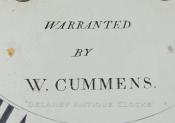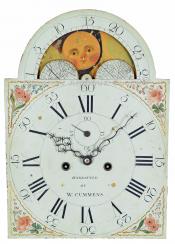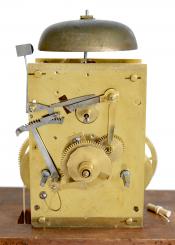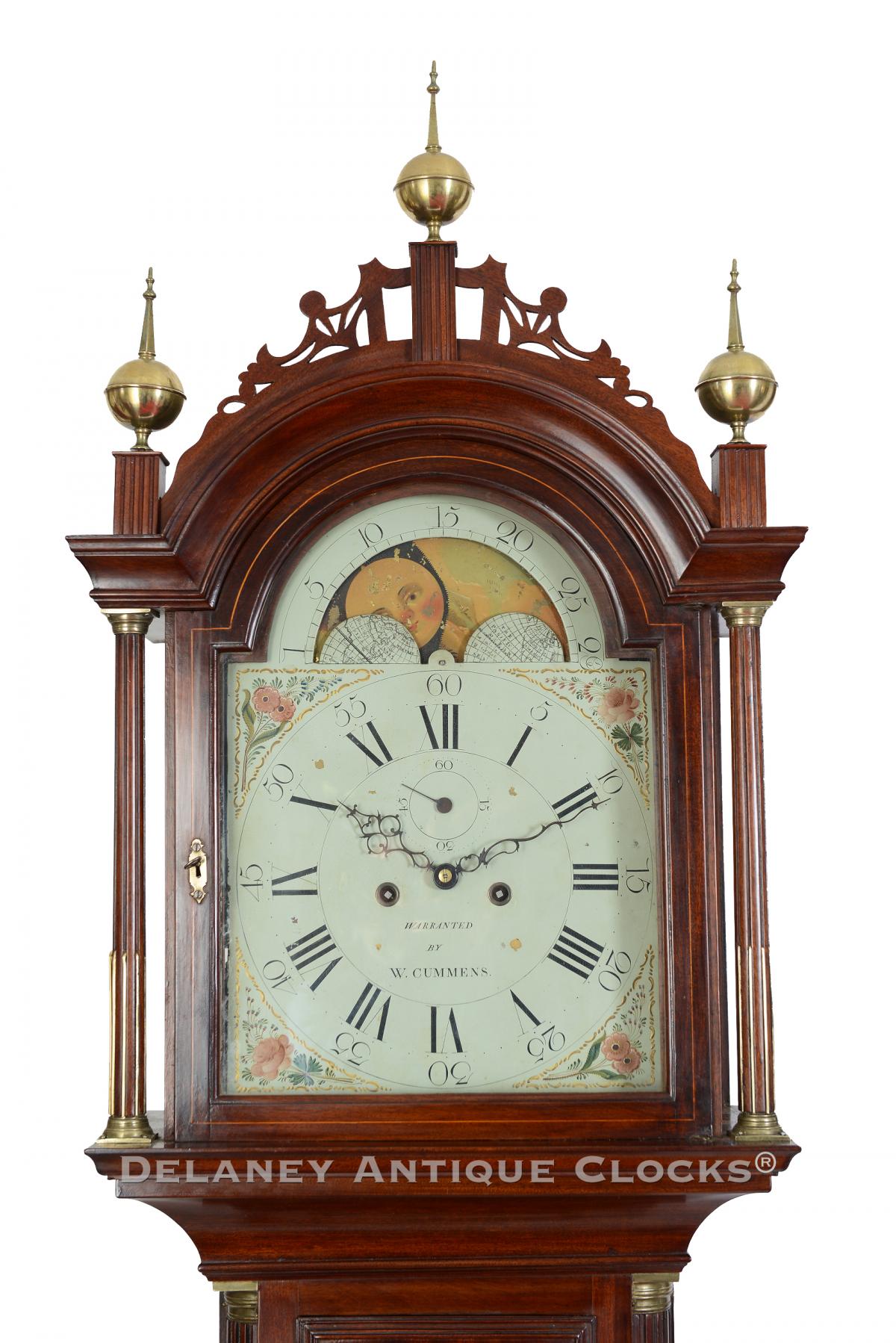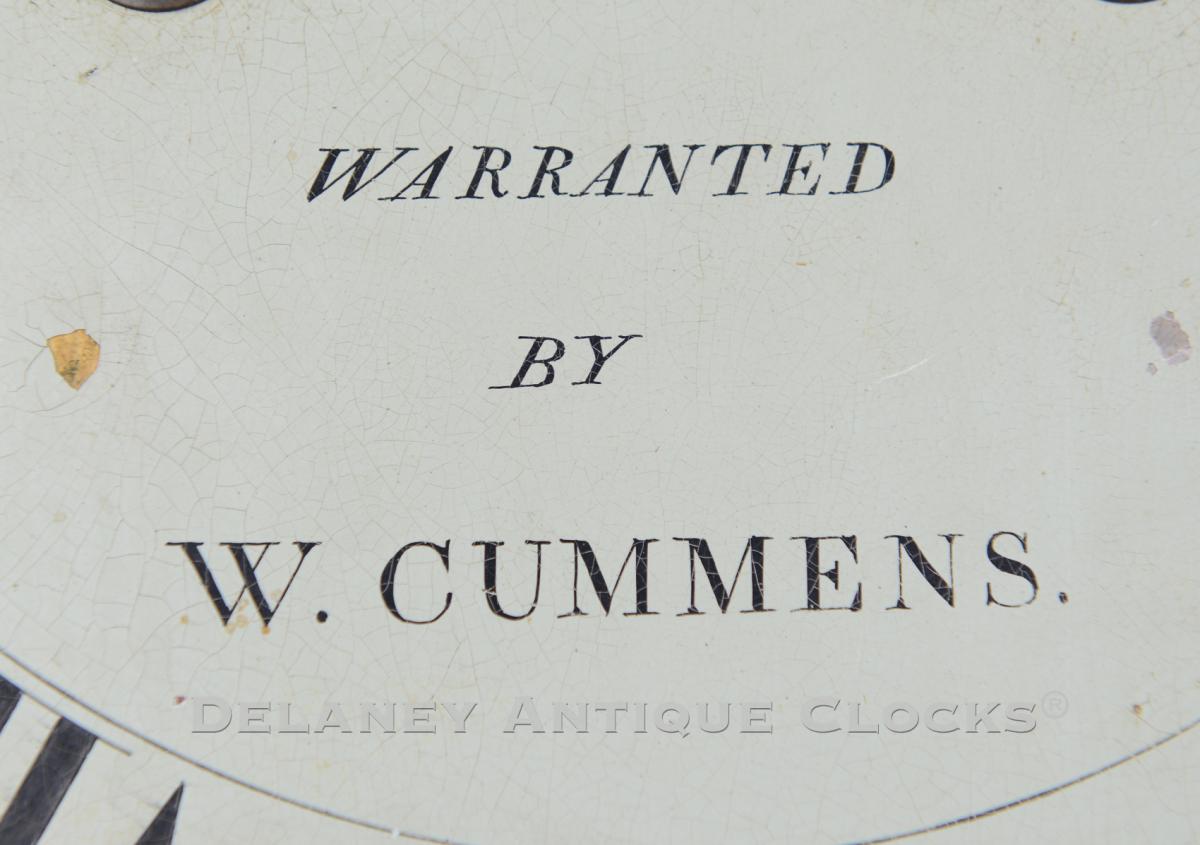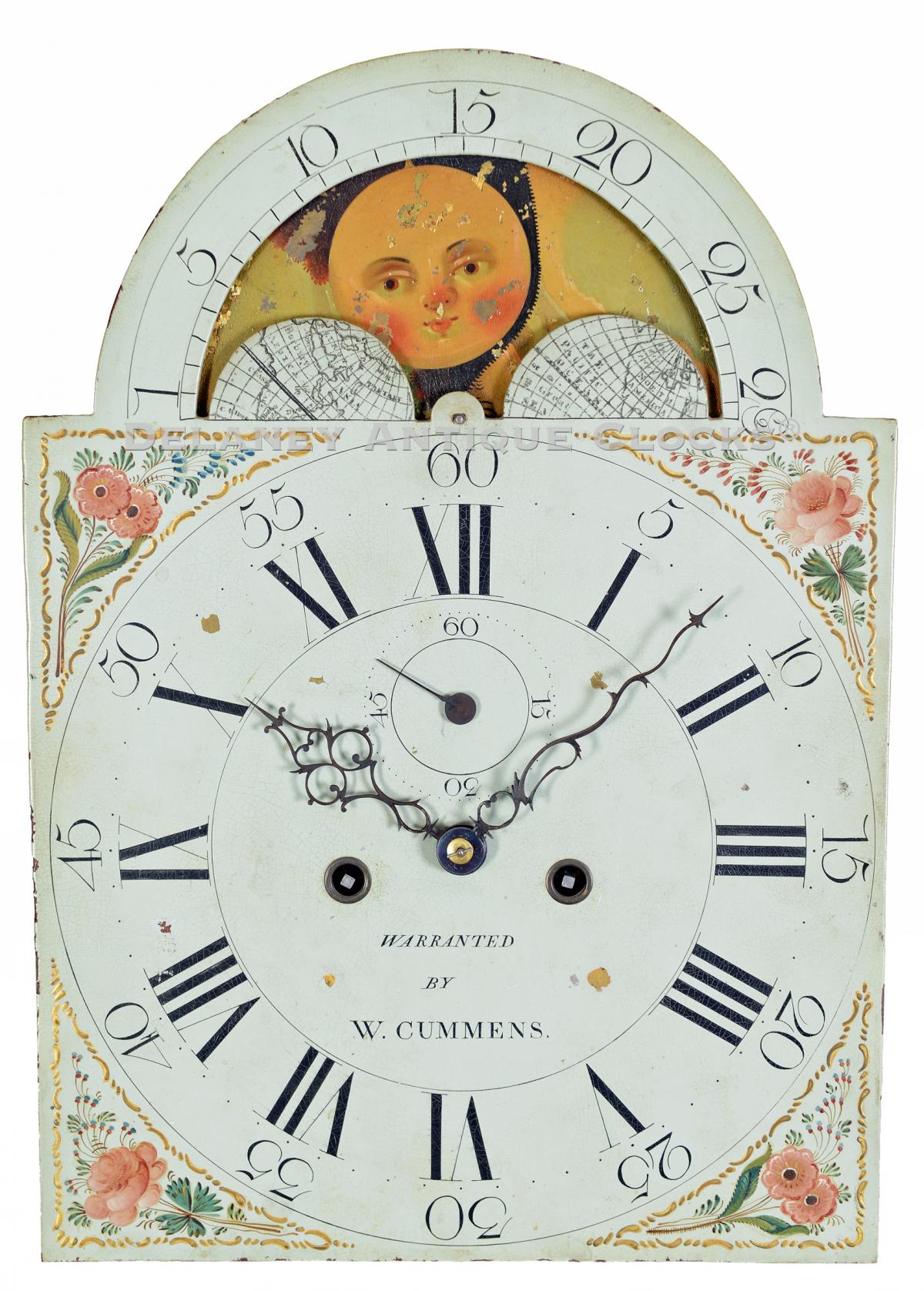William Cummens of Roxbury, Massachusetts. An inlaid tall case clock of modest height. It is 7 feet 4 inches tall to the top of the center finial. 223270.
This fine quarter-fan inlaid mahogany case tall clock exhibits excellent proportions. It features a moon phase painted dial signed by the Roxbury, Massachusetts Clockmaker, William Cummens.
This is a beautiful clock. The case exhibits a traditional Roxbury form and construction characteristics made famous by the Willard family of clockmakers. The inlaid mahogany case uses New England white pine as a secondary wood. The case is decorated with thin lines and quarter fan inlays. The current shellac-based finish is an older surface and is in excellent condition. The color and depth are to be admired. This example stands on four nicely formed applied ogee bracket feet. These are applied to a double-stepped molding that is attached to the base. The base panel is line inlaid. This delicate string detail forms a box or conforms to the square shape of the base. This pattern is repeated in the rectangular-shaped waist door and hood doors. The front base panel is also decorated with inlaid quarter fans. All four fans are comprised of three individual petals that are sand-shaded. This is a beautiful detail. The inlaid waist door also features quarter fan inlays and is trimmed with applied molding along its perimeter. Through this door, one can access the case's interior. Here, you will find the original tin can weights and pendulum. Brass-stopped fluted quarter columns flank the sides or front corners of the waist. These terminate in brass quarter capitals. The bonnet columns are also brass stopped-fluted and mounted into brass capitals. These are free-standing and visually support the molded arch. A pierced and open fretwork design surmounts the top of the bonnet. It incorporates three brass ball-and-spiked finials mounted on fluted chimney plinths. The arched bonnet door is also lined inlaid and is fitted with glass. It opens to access the painted iron dial.
This painted dial is signed below the calendar aperture, "WARRANTED / BY / W. CUMMENS." This signature is original to this Clock. A moon phase mechanism is featured in the arch or lunette of this dial. This mechanism tracts the lunar calendar, which is 29.5 days in duration. The time ring features Roman-style hour numerals, and Arabic numerals indicate the five-minute markers and ten-second increments on the seconds dial. The four spandrel areas feature floral themes. The steel hands are hand-filed to a beautiful form.
The movement is constructed in brass and is of good quality. Four turned pillars support the two brass plates. Hardened steel shafts support the polished steel pinions, brass gearing, and recoil escapement. The winding drums are grooved. The weight-driven movement is designed to run for eight days on a full wind. It is a two-train or a time-and-strike design, having a rack and snail striking system. As a result, it will strike each hour on the hour on a cast iron bell mounted above the movement. The strike hammer is returned to the ready position via a coil spring.
The front plate of the movement is inscribed with a bit of the Clock's history. The front plate, behind the dial, is engraved with the following information. "Cleaned by E. Taber / Dec. 14th, 1837. / Ditto Nov. 20, 1843. / Hobbs 1881." Elnathan Taber and William Cummens trained under Simon Willard and became his two most famous apprentices, partly because they stayed in Boston. The notation on the front plate suggests that this Clock stayed in the Boston area for some time. Taber's name is frequently found on the movements of Boston-made clocks.
This Clock was made circa 1795 and stands an impressive 7 feet 4 inches tall.
Inventory number 223270.
William Cummens was born in 1768 and died in Roxbury, Massachusetts, on April 20, 1834. He was 66 years old. William worked in Roxbury as a clockmaker as early as 1789. He learned clockmaking from Simon Willard. In fact, he was an apprentice in Willard's shop about the same time that Elnathan Taber was training. After serving his apprenticeship, Cummens stayed in Roxbury and worked alongside the Willard clockmaking family for many years. Based on the large number of clocks that have survived, Cummens and the Willards must have had an excellent relationship with one another. In this Roxbury location, Cummens had direct access to the same suppliers, such as case makers and dial painters, that the Willard family used. As a result, his clocks are nearly identical in form. Cummens was one of the first persons authorized by Simon Willard to manufacture Simon Willard's Patented Timepiece. The patent was granted in 1802. Over the past 55-plus years of buying and selling clocks, we have owned and sold a substantial number of tall case clocks, Massachusetts shelf clocks, and wall timepieces signed by this important clockmaker.






